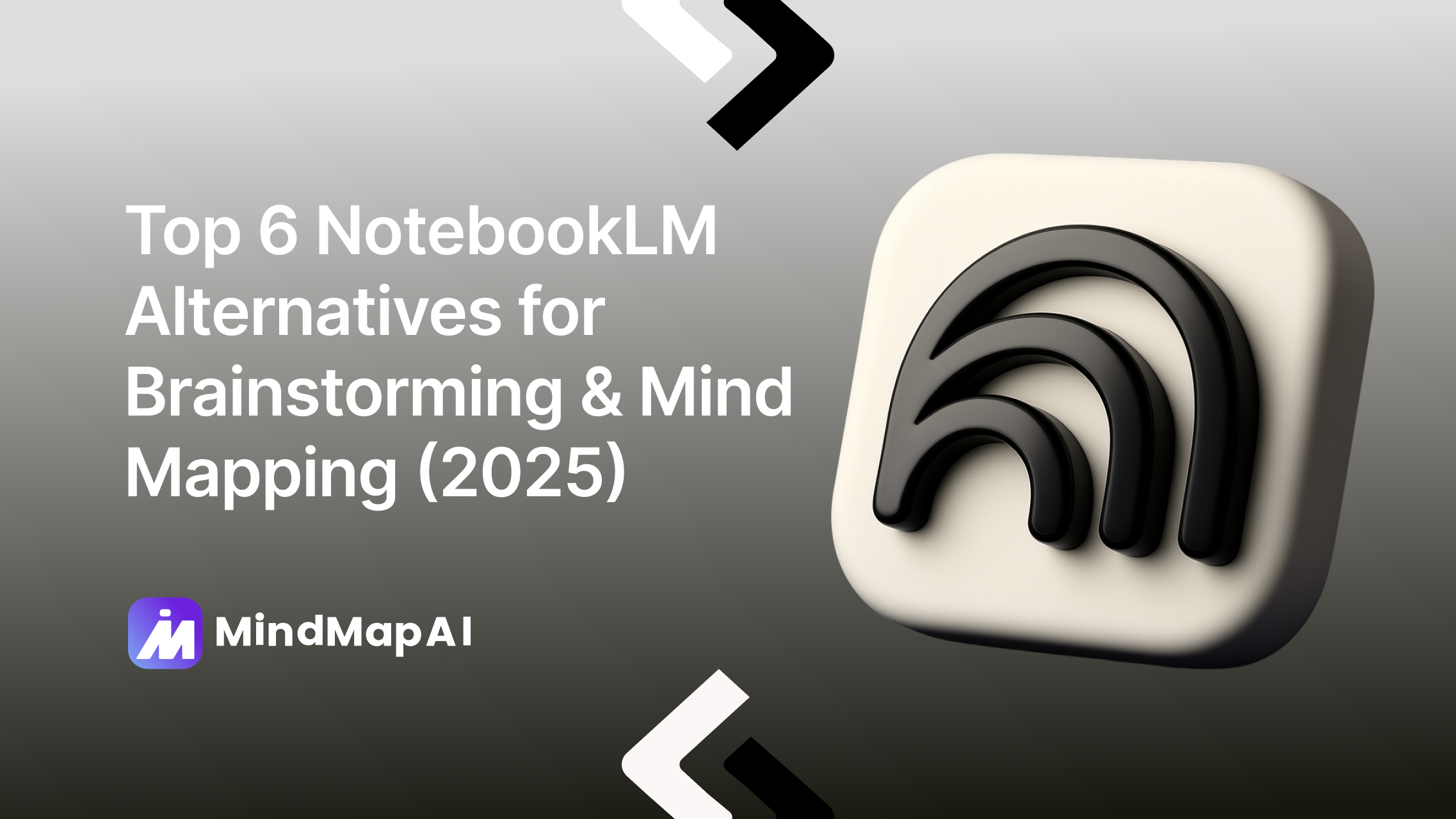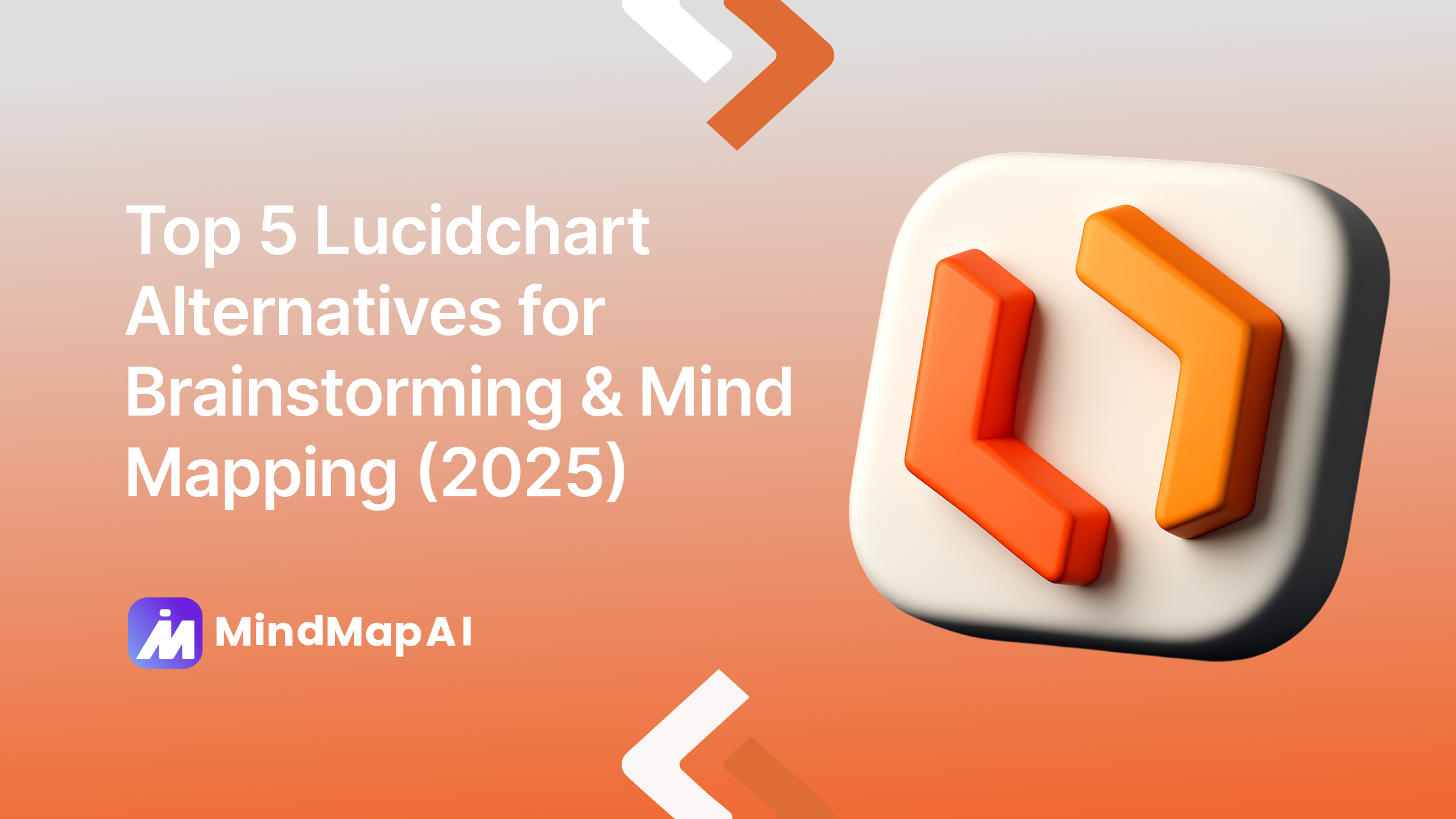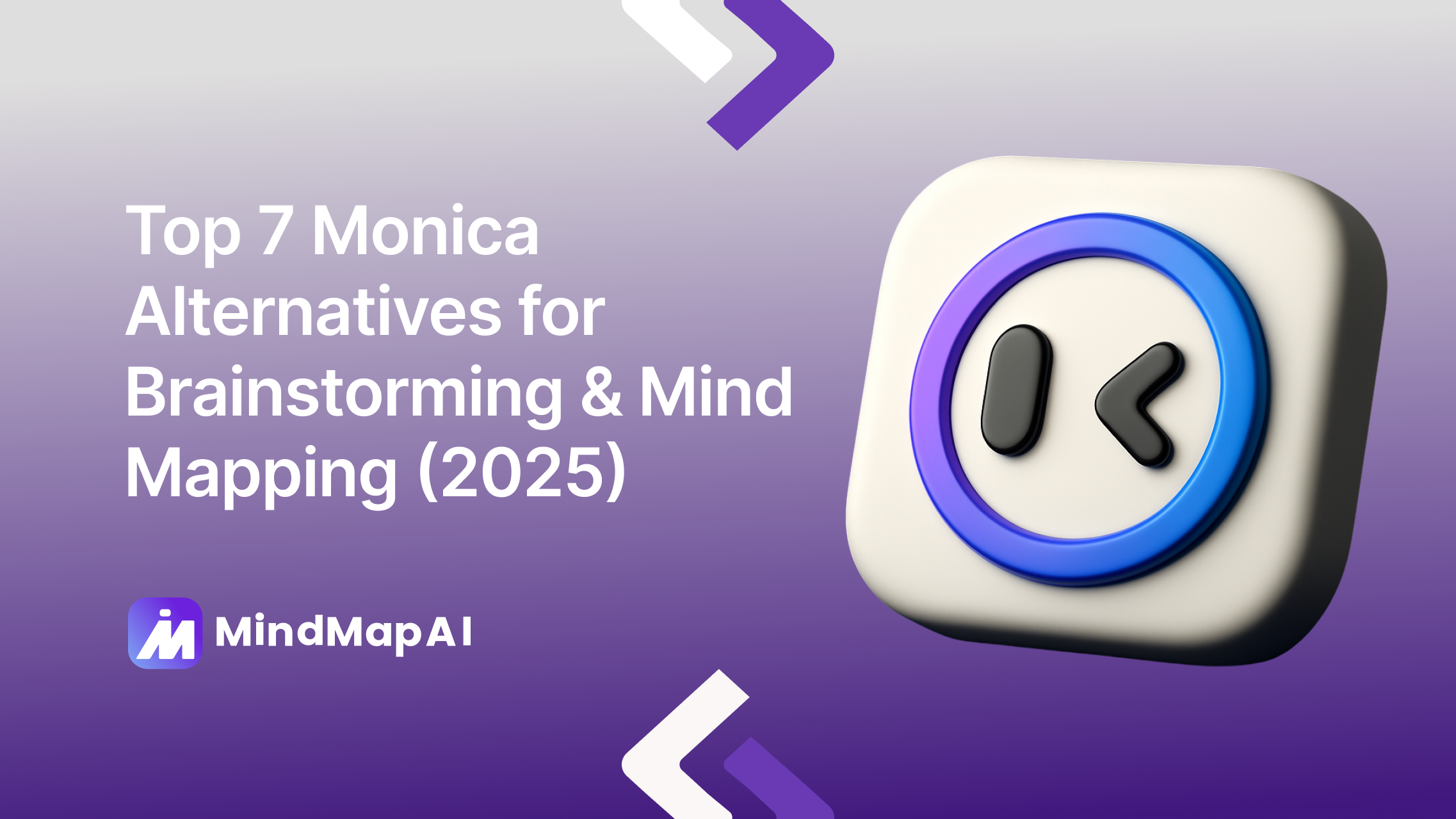
Top 7 Monica Alternatives for Brainstorming & Mind Mapping (2025)
Monica AI is a powerful all-in-one assistant that bundles leading models (e.g., GPT-5, Claude, Gemini) into a single app for chat, writing, search, and media generation across web, desktop, and mobile. It shines for quick summaries, explanations, and professional tasks like research, strategy, and document analysis. But for users who think visually or need to map ideas, branches, and relationships, Monica’s text-first flow can feel limiting. This guide spotlights the Top 7 Monica AI alternatives built for brainstorming and mind mapping, helping you turn prompts, files, and research into clear, editable structures that teams can refine, present, and ship.
Transform your thoughts into stunning AI-powered mind maps in seconds
Why look for Monica alternatives?
Monica excels at chat and content assistance, not visual thinking. If you need to see connections, co-create in real time, and iterate on living diagrams, a dedicated AI mind mapping tool fits better. Key gaps users report:
- Minimal interactive map editing and layout control
- Limited visual collaboration and versioning on maps
- Text-heavy outputs that hide relationships
- Fewer purpose-built exports (e.g., structured Markdown, CSV, slide decks)
- Cognitive overload from general features when you only need brainstorming structure
Switching to an AI mind map tool makes ideation faster, collaboration clearer, and execution more measurable.
1. MindMap AI

Why it stands out
Drop in text, PDFs, images, CSVs, audio, or video and MindMap AI instantly turns them into a clean, editable mind map no manual redrawing. Copilot Chat sits right on the canvas with chat memory and prompt retry, so you can expand ideas, summarize dense branches, or refocus topics as your thinking evolves. Second-Order Connections automatically surfaces non-obvious links across nodes, helping you spot patterns, themes, and insights that linear notes usually hide.
Unlike one-shot generators that freeze after the first output, MindMap AI supports continuous refinement. Add, edit, regroup, and iterate in real time while the AI keeps pace with your direction. When you’re ready to share or publish, export without watermarks to PDF, PNG, SVG, Markdown, or CSV, and use private/public links. It’s a faster path from raw material to evidence-backed structure ideal for students organizing readings, researchers synthesizing sources, and strategy teams mapping decisions with clarity and confidence.
Key Features
Multi-format ingest to map: Text, PDFs, images, CSV, audio, video, and more for structured content.
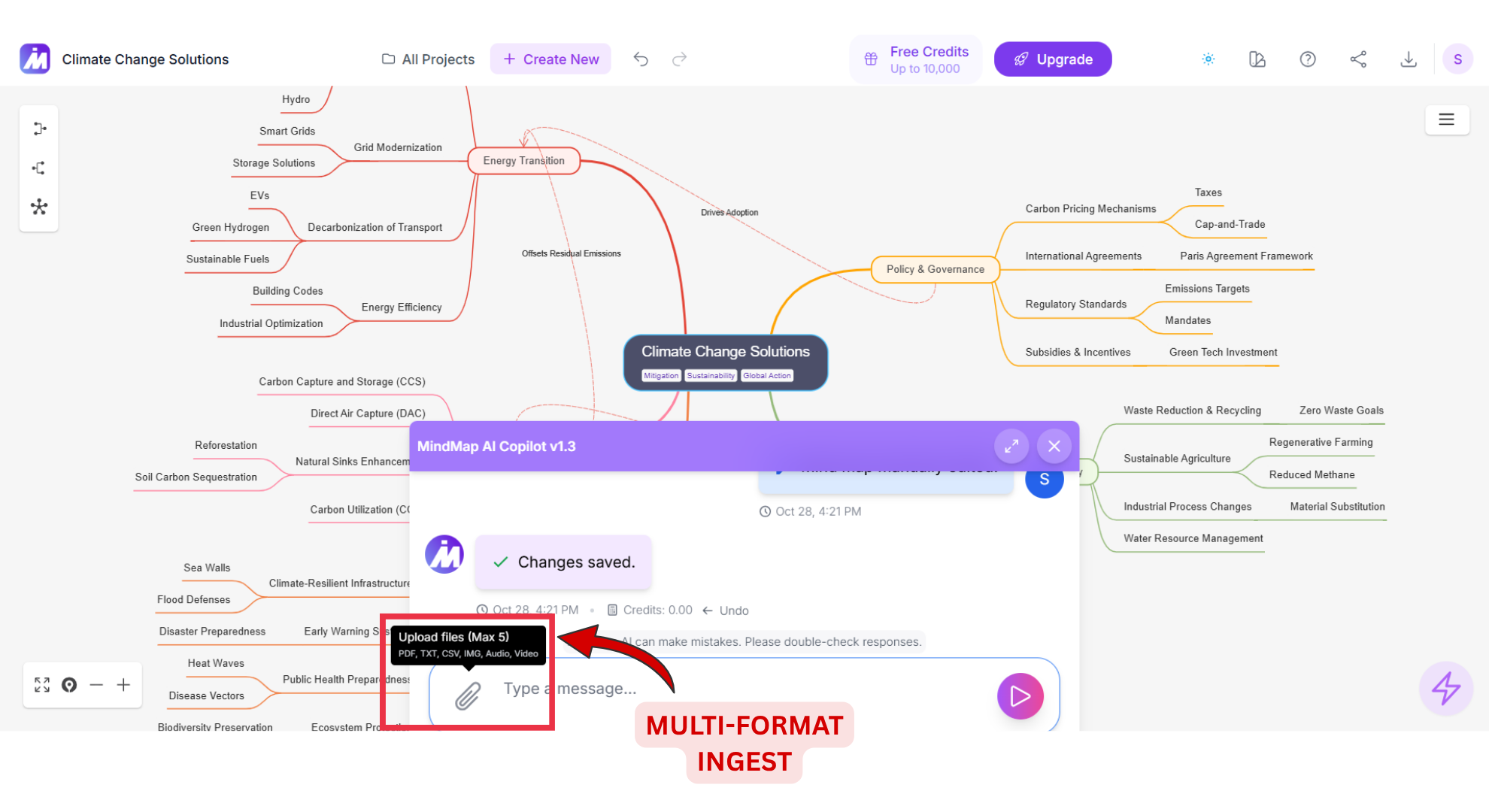
AI Copilot Chat: Summarize, expand, rephrase, focus topics and other chat in real time.
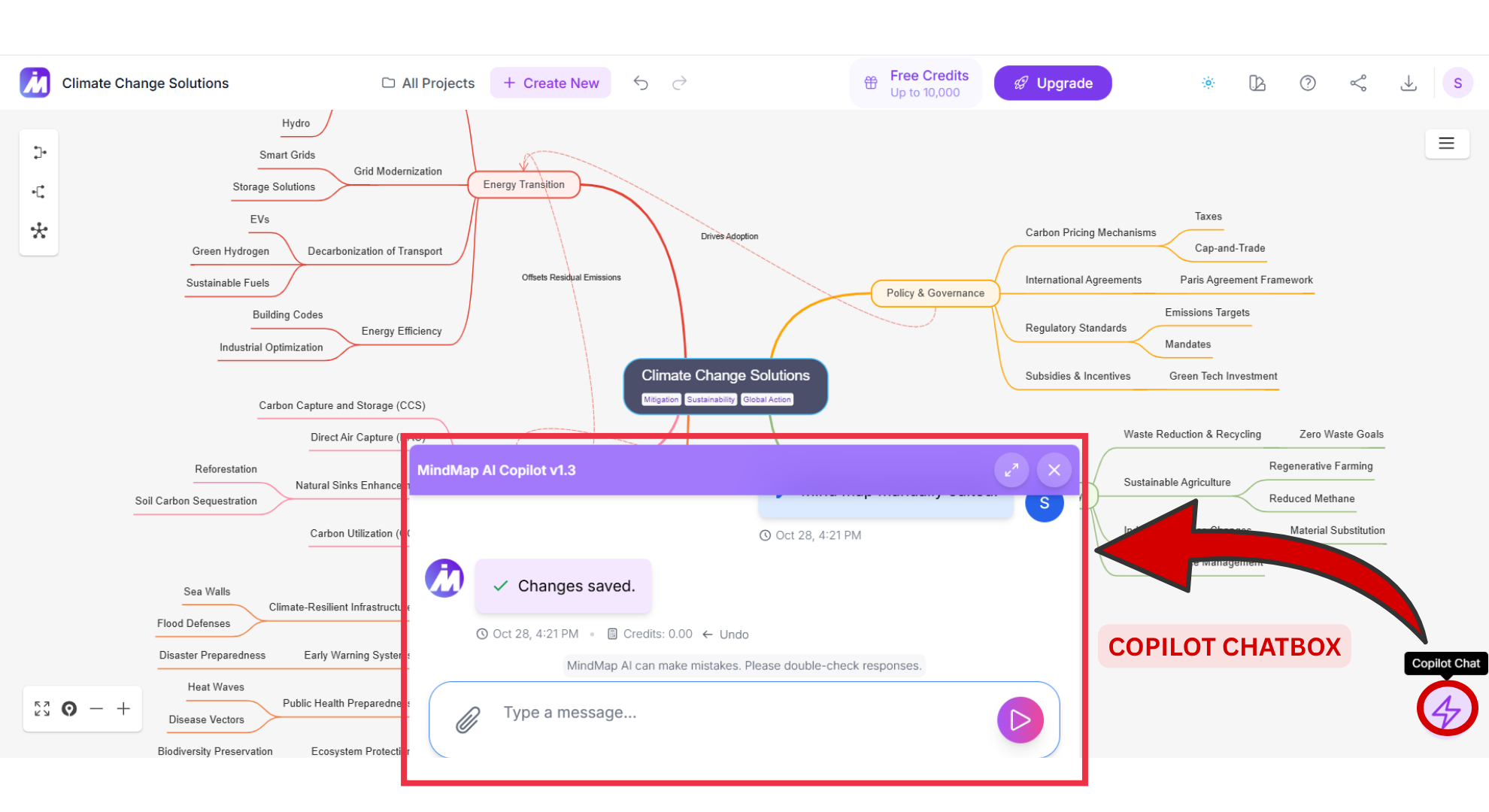
Second-Order Connections to reveal related ideas and non-obvious links.
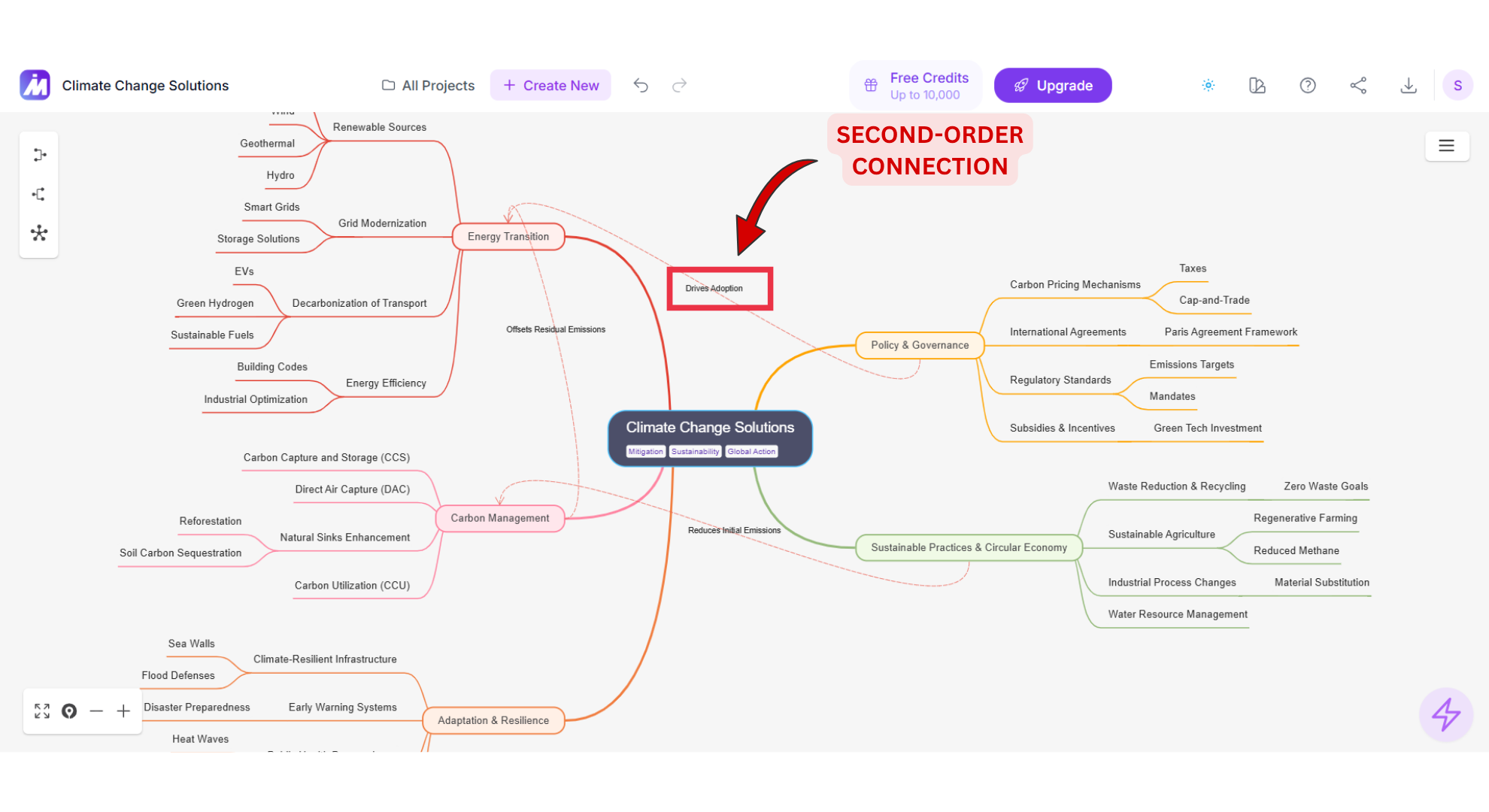
Exports & sharing Options : PDF, PNG, SVG, Markdown, CSV, project and private, public share links; no watermarks on free exports.
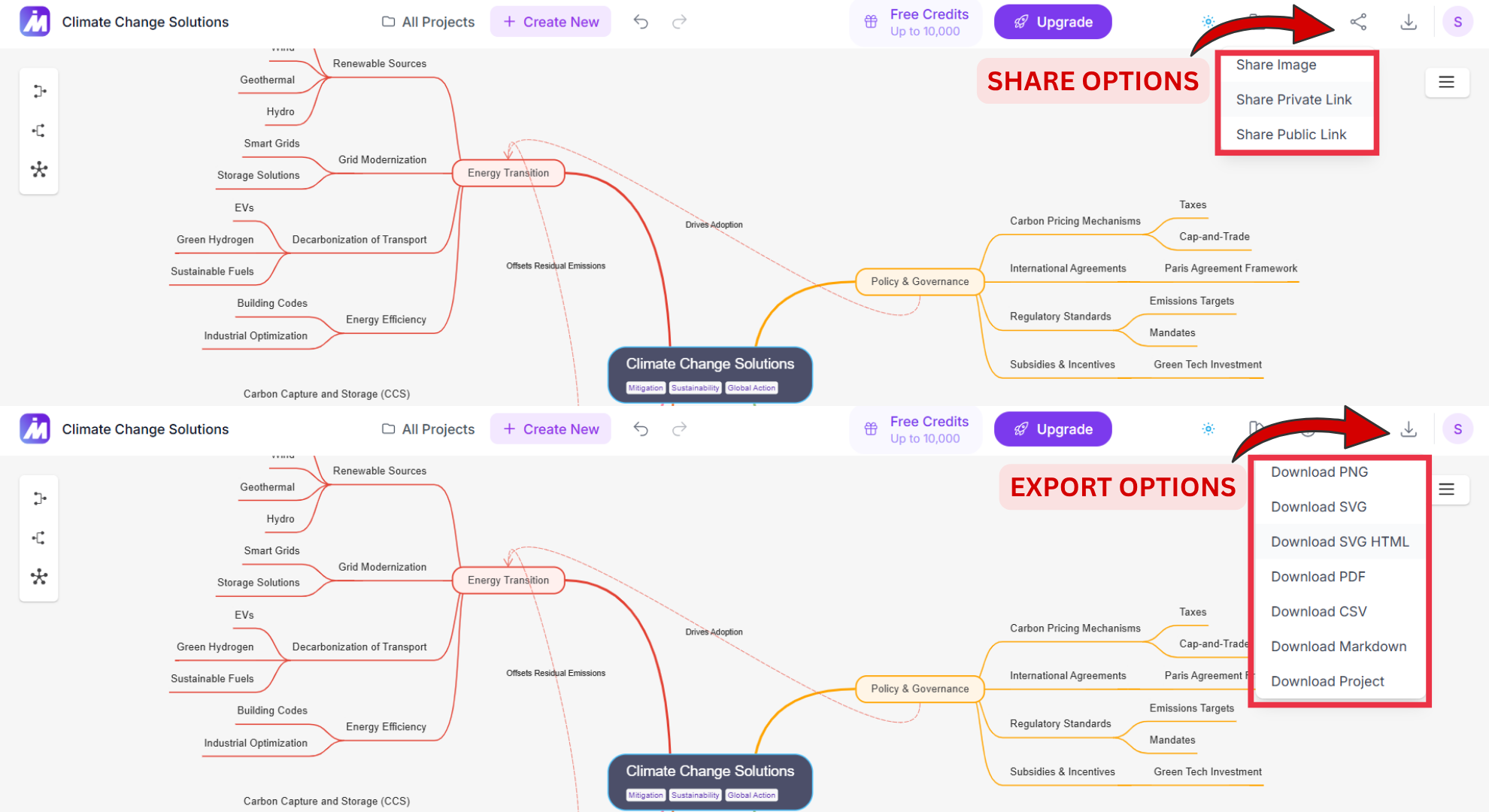
Pros
AI does the heavy lifting such as real file-to-map generation, node-level summaries, topic focus, second-order connections.
Continuous iteration thorugh real-time copilot with memory, not just one-time generation.
Multi and watermark-free exports options suc as PDF, PNG, SVG, CSV Markdown and share links for public and private.
Unlimited manual maps on free, student discounts, lifetime plan option.
Cross-device access for web, iOS, Android and Chrome and Edge extensions.
Cons
Real-time co-editing not yet available (share via links).
Fewer decorative templates than design-first boards or diagramming suites.
Pricing
Free: 100 AI credits/month.
Basic: $3.74/mo billed yearly (or $7.49/mo monthly) - 2,000 credits/month; add-on 2,000 credits for $4.99.
Pro: $7.49/mo billed yearly (or $14.99/mo monthly) - 5,000 credits/month; add-on 5,000 credits for $4.99.
Lifetime: One-time purchase starting at $129 (best for long-term use).
Promo: 50% off all annual plans (limited time).
Discounts: Student discounts available.
Still using Monica AI for brainstorming? See how MindMap AI outperforms it in AI mapping.
2. Canva
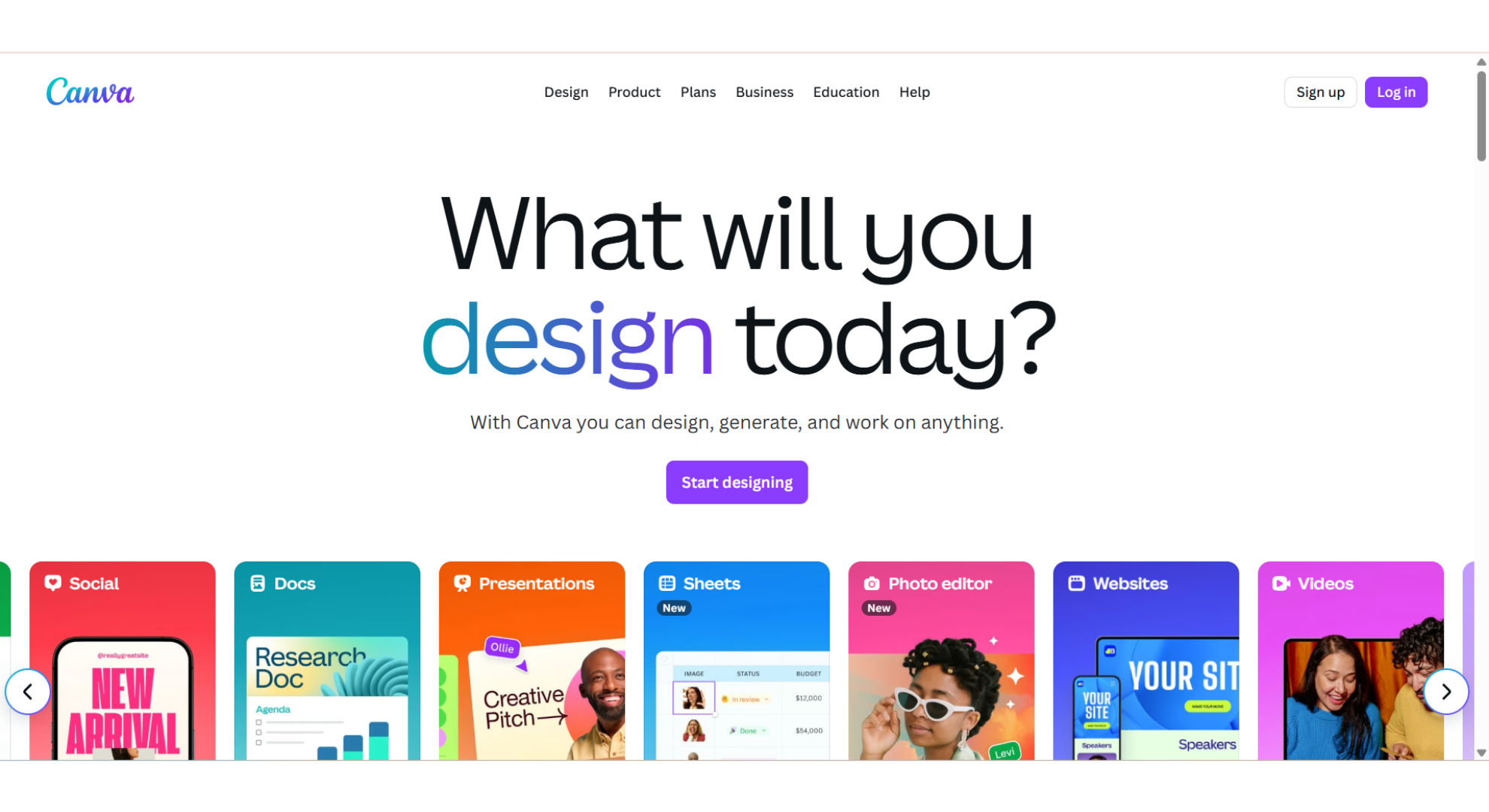
Why it stands out
Canva is a design-centric visual suite that blends Whiteboards, Presentations, Docs, Video, and brand assets in one AI-powered workspace. It’s perfect when you need a polished brainstorm board or lightweight mind map fast, no steep learning curve. Magic Studio assists with writing, layout cleanup, and quick visuals, while Brand Kits keep fonts, colors, and logos consistent across every file.
Compared with Monica’s all-purpose AI assistant approach, Canva focuses on collaborative creation. You can ideate on an infinite whiteboard, turn sticky notes into slides, drop in media from vast content libraries (Disney, Artlist, and more), and share or present streamlining the path from ideas to on-brand delivery.
Key features
Whiteboards for sticky-note brainstorming and simple node/branch mapping
Magic Studio AI for drafting copy, tidying layouts, and accelerating edits
Visual Suite: Presentations, Docs, Websites, Video, and Social in one place
Brand Kits, locked templates, and approval flows for consistent outputs
Massive, royalty-cleared content libraries (photos, graphics, video, audio, fonts)
Real-time collaboration with comments, tasks, and team permissions
Education and nonprofit programs with premium features at no cost
Pros
Extremely fast to produce beautiful, on-brand brainstorms and deliverables
End-to-end flow: ideate on a board → convert to slides/social/websites
Minimal learning curve; ideal for marketers, educators, and small teams
Cons
Mind mapping is mostly manual/template-driven (not AI file-to-map)
Less suited for complex, data-driven maps or research-first workflows
Pricing
Free plan available.
Pro (solo) and Teams tiers add premium content, brand controls, collaboration/permissions, and workflow governance; education and nonprofit plans offer premium capabilities for free.
3. MindMeister
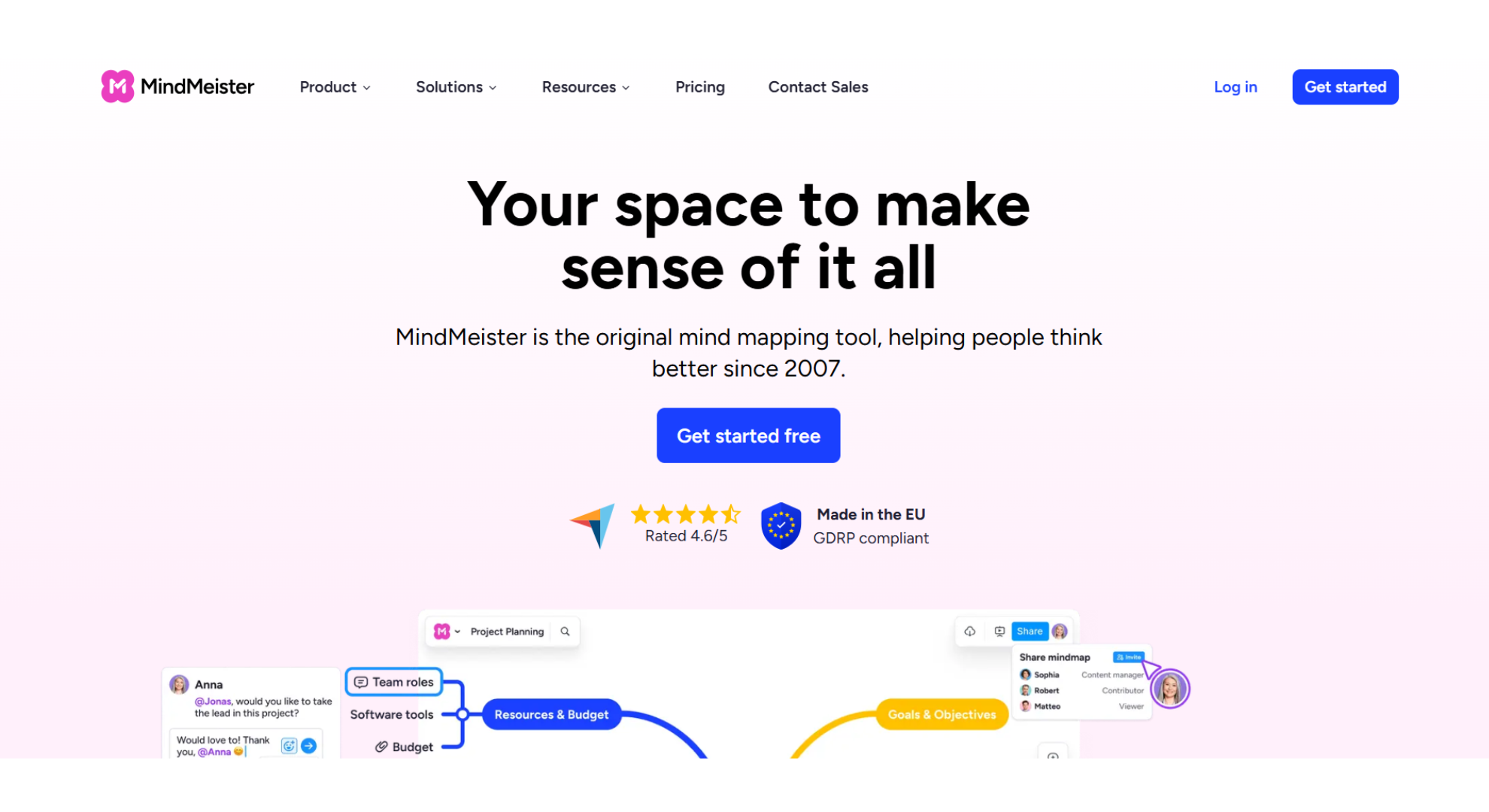
Why it stands out
MindMeister is a purpose-built mind-mapping platform (est. 2007) that keeps brainstorming clean, structured, and easy to follow. You can drag-and-drop topics, re-order branches on the fly, and attach links, notes, and images so context stays with the idea. Presentation Mode turns any map into a walkthrough, which means fewer slides and more focus.
Compared with Monica’s general AI assistant approach, MindMeister stays laser-focused on thinking structure: real-time maps for team ideation, comments for discussion, and tasks created directly on the map. For classrooms, project kickoffs, and strategy sessions, it’s a reliable way to turn scattered thoughts into a visual plan that everyone understands.
Key features
Fast drag-and-drop mapping with notes, links, and images
Real-time collaboration with comments and discussions
Presentation Mode to share maps without making slidesCreate actionable next steps and tasks from within the map
Templates to start maps in minutes (brainstorming, meetings, study)
Secure sharing and granular access for teams and clients
Enterprise-grade security: ISO 27001, GDPR compliant, hosted in Germany
Pros
Purpose-built for clear, structured maps minimal learning curve
Great for teams: live co-editing, comments, and simple handoffs to action
Presentation-ready without exporting to slides
Cons
Focused on mapping (not an all-in-one whiteboard/work OS)
AI/file-to-map automation is lighter than AI-first research tools
Pricing
Free plan available.
Paid tiers add enhanced collaboration, admin controls, advanced sharing, and governance suitable for schools, businesses, and enterprises.
4. NotebookLM
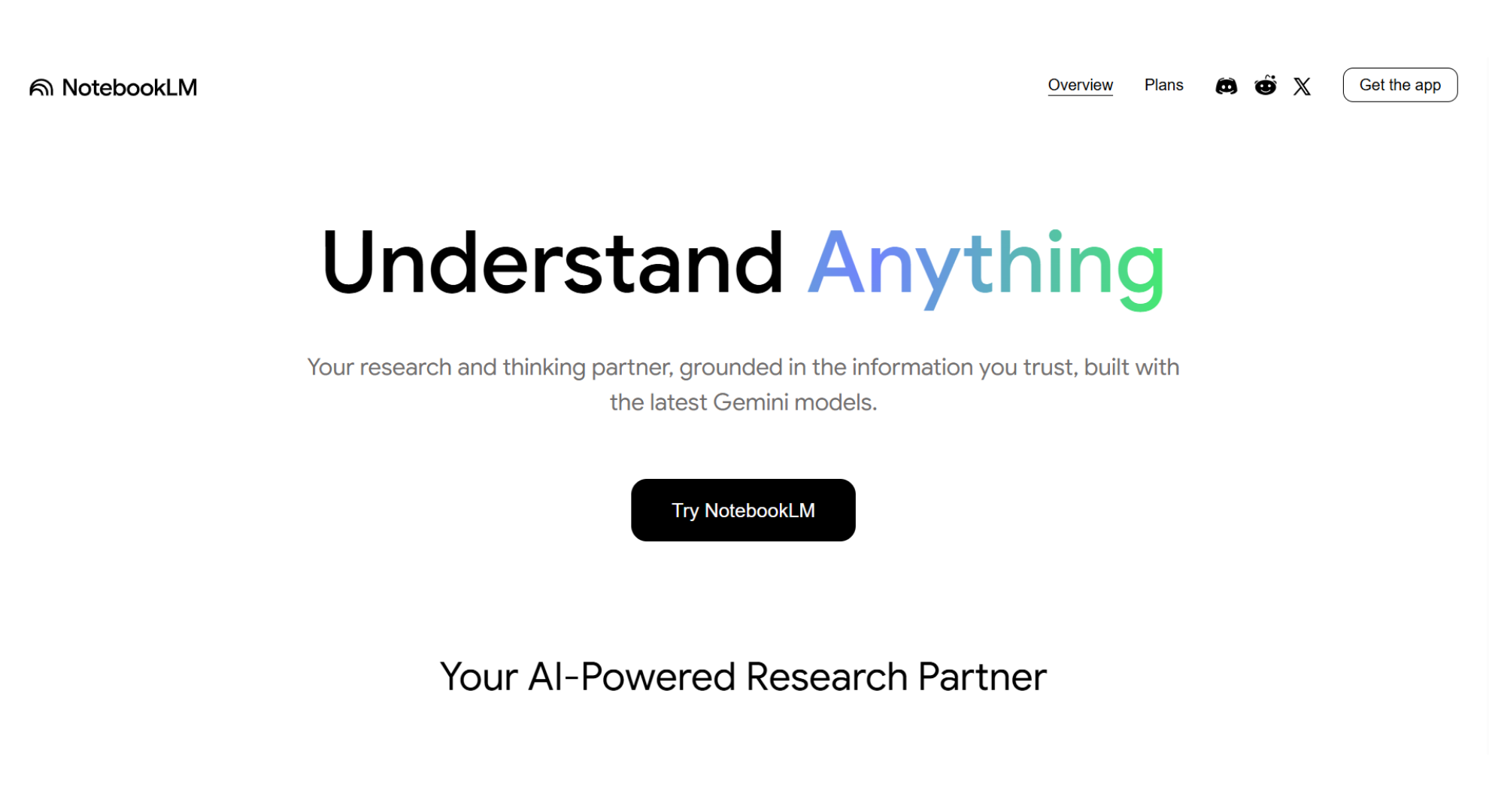
Why it stands out
NotebookLM is a source-grounded research and thinking partner built on Gemini. Instead of chatting in the abstract, you upload the materials you trust PDFs, Google Docs/Slides, websites, YouTube, even audio and it becomes a personalized “expert” on just those sources. It summarizes, explains difficult passages, and connects ideas across files with citations to the exact quotes it used.
Compared with Monica’s general all-purpose assistant, NotebookLM is optimized for serious reading and synthesis. You can spin up outlines, pull supporting evidence, and even generate an Audio Overview that plays back a conversational “deep dive” of your sources great for revision or briefing before a workshop. For research-heavy brainstorming that needs receipts, it’s a powerful companion.
Key features
Multi-source ingest: PDFs, sites, YouTube, audio, Google Docs/Slides, and more
Source-grounded answers with line-level citations and quotable evidence
Instant insights: explanations, comparisons, analogies, and real-world examples
Audio Overview to turn a packet of sources into a one-click “deep dive” discussion
Structured outputs: outlines, talking points, presentation scaffolds
Privacy promise: personal data and uploads aren’t used to train NotebookLM
Pros
Exceptional for literature digestion, fact-checking, and evidence-backed ideation
Clear citations build trust and make handoffs to teams or professors easier
Multimodal understanding (text, audio, video) broadens what you can analyze
Cons
No native mind-map canvas or whiteboard; you’ll export ideas to mapping tools
Collaboration and workshop facilitation are lighter than full visual workspaces
Pricing
Free at the time of writing
Check the official page for the latest availability and plan details.
5. Creately
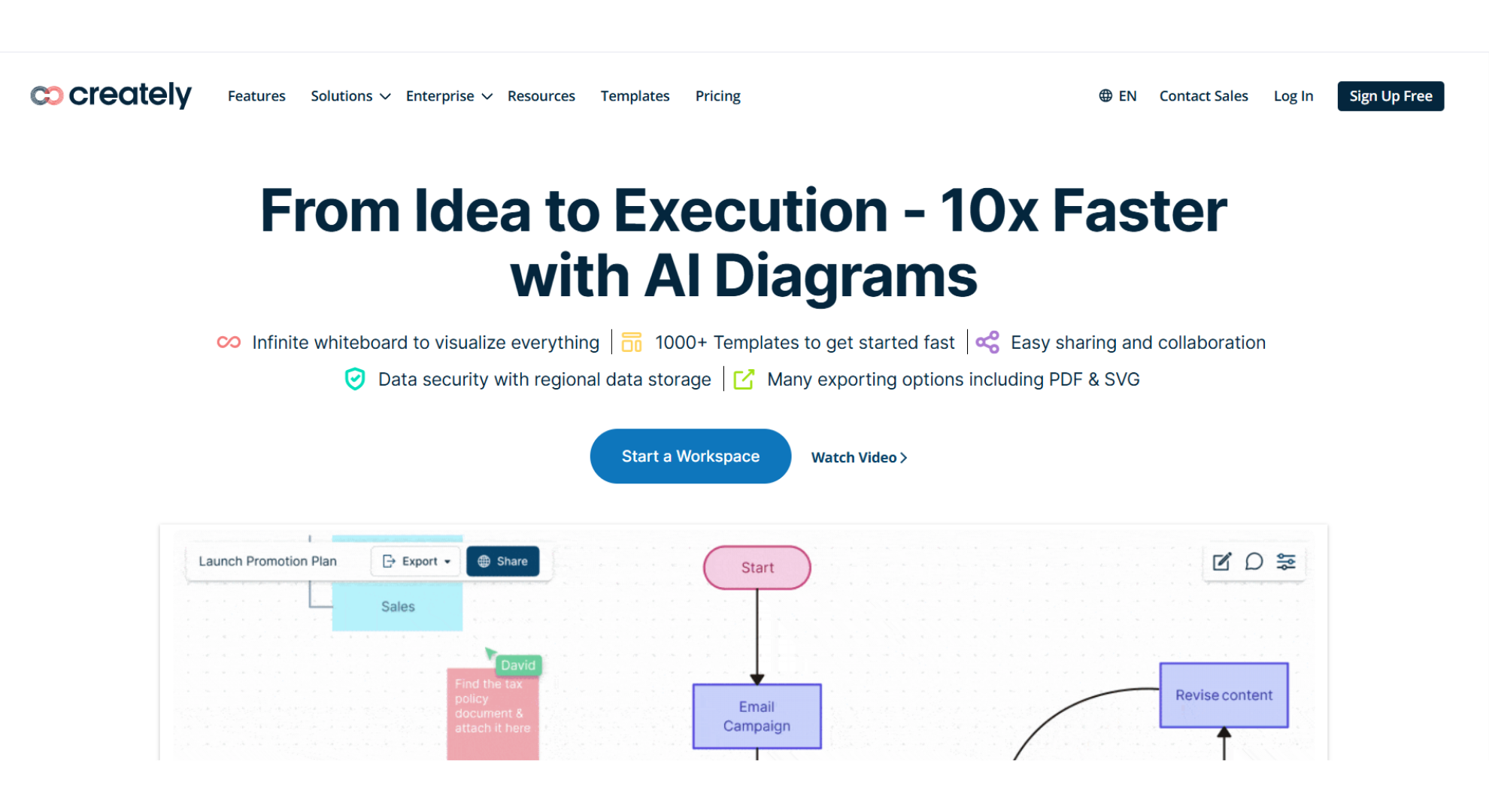
Why it stands out
Creately is a visual work management platform that runs on a smart, infinite canvas combining diagramming, whiteboarding, and lightweight databases so ideas don’t just look good, they move into execution. You can map anything mind maps, flowcharts, ERDs, org charts, network diagrams and keep the same items synced across multiple views (boards, lists, frameworks) without rebuilding.
Compared with Monica’s all-purpose AI assistant, Creately centers collaboration and structure. Its VIZ (AI-powered visual intelligence) generates diagrams from prompts, applies strategic frameworks, and repackages the same content into multiple visual formats. For teams that need workshops, models, and handoff in one place plus on-prem or data residency options Creately bridges brainstorming and delivery.
Key features
Infinite whiteboard with 1000+ templates (mind maps, BPMN, UML, ER, wireframes, SWOT, more)
VIZ AI to generate/reshape diagrams, surface insights, and switch formats instantly
Data-linked visual apps: the same items sync across maps, boards, and custom databases
Multi-perspective visualizations for concepts, processes, and org structures
Real-time and async collaboration with comments, tasks, and shared canvases
Two-way integrations (e.g., Confluence, Microsoft Teams, Slack) and flexible exports (PDF, SVG)
Enterprise options: ISO 27001, SOC 2 Type II, data residency, uptime SLAs, admin controls, on-prem
Pros
Strong “idea → execution” story with data-linked visuals and custom databases
Broad diagram library plus AI generation for fast starts and structured frameworks
Enterprise-ready: security, governance, regional storage, and on-prem deployment
Cons
Heavier than a pure mind-mapping app for solo, quick sketches
AI is focused on diagramming and frameworks (not a research-grounded chat like RAG tools)
Pricing
Free plan available.
Paid tiers add advanced collaboration, data features, admin/governance, and enterprise options (including data residency and on-prem) suited for teams and regulated organizations.
6. MindManager
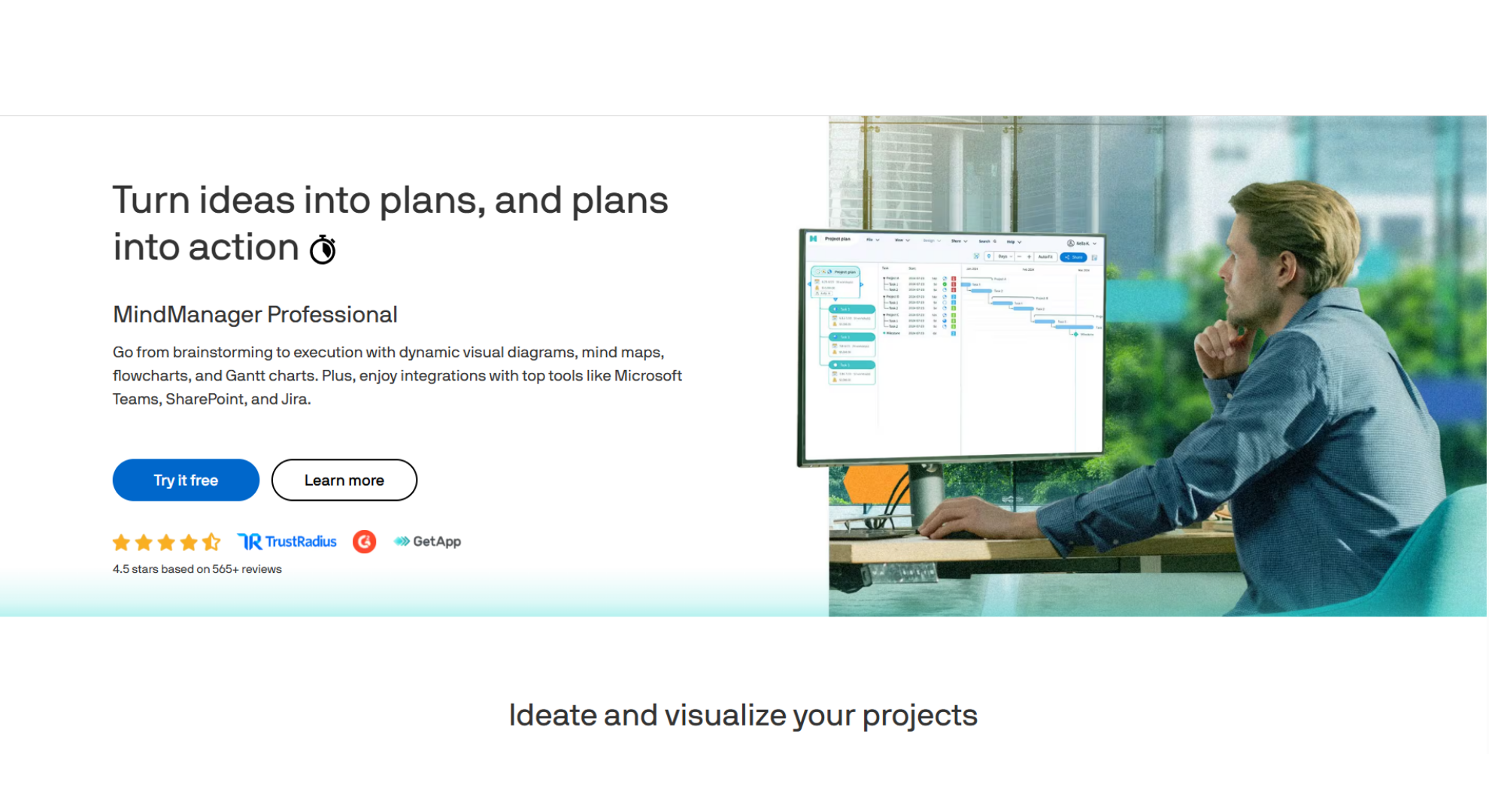
Why it stands out
MindManager is a professional-grade visual work suite that turns brainstorming into structured plans. Beyond classic mind maps, you can build flowcharts, concept maps, timelines, and Gantt charts, then connect them to tasks, priorities, and progress. It’s designed for teams that need clarity, status visibility, and executive-ready deliverables without jumping across apps.
Compared with Monica’s all-purpose AI assistant, MindManager focuses on disciplined planning. You can start with a mind map, layer tasks and dependencies, switch to a Gantt view, and share a clean project snapshot. With deep Microsoft ecosystem integrations and enterprise controls, it’s a strong choice for PMOs, product teams, and operations leaders.
Key features
Mind maps, flowcharts, concept maps, swimlanes, and Gantt timelines
Task management with start/due dates, effort, resources, and dependencies
SmartRules™/conditional formatting to automate visuals and highlight risks
Co-editing, comments, and presentation mode for stakeholder reviews
Dashboard-style views (filter by status, priority, owner) for fast reporting
Integrations with Microsoft Teams, SharePoint, Outlook, and Jira
Exports to PDF, Microsoft Office, and image formats for easy sharing
Pros
Great “idea → plan → timeline” handoff with Gantt and task logic
Automation and conditional formatting surface risks and priorities clearly
Strong enterprise orientation and Microsoft-friendly integrations
Cons
Heavier learning curve than lightweight whiteboards
AI/file-to-map automation is limited versus research-first AI tools
Pricing
Free 30-day trial available.
Essentials (web), Professional (full feature set for individuals/small teams), and Enterprise tiers add advanced collaboration, admin/governance, and integrations suited to larger organizations.
7. SmartDraw
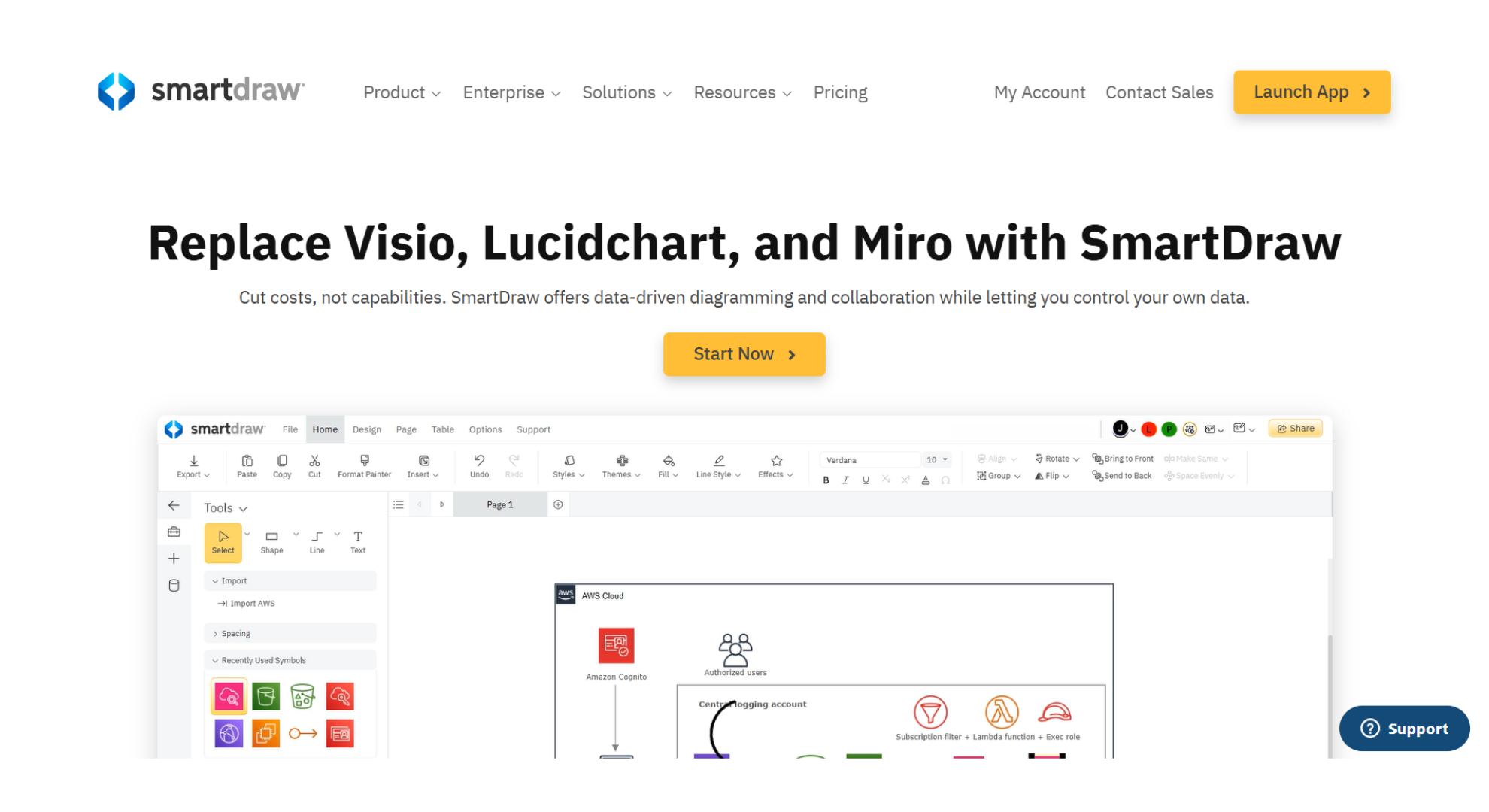
Why it stands out
SmartDraw is an enterprise-grade diagramming and whiteboarding platform built to replace Visio, Lucidchart, and Miro while giving IT full control over data. Beyond clean flowcharts and mind maps, it excels at data-driven diagrams: generate visuals automatically from sources, visualize cloud architectures (AWS, Azure), and manage multi-diagram whiteboards for complex processes.
Compared with Monica’s all-purpose AI assistant, SmartDraw focuses on compliant, scalable diagramming for organizations. It saves files directly to OneDrive, SharePoint, or Google Drive using your existing folders and permissions, slots into Microsoft/Google stacks for provisioning and governance, and offers bulk migration plus dedicated enterprise support.
Key features
Multi-diagram whiteboard for flowcharts, org charts, process maps, floor plans, and more
Data-driven diagramming and automatic generation from integrated sources
Cloud architecture stencils and visualizations for AWS and Azure
Direct save to OneDrive, SharePoint, or Google Drive with existing permissions
Admin provisioning within Microsoft/Google enterprise environments
Bulk file migration paths from Visio/Lucidchart/Miro
Dedicated customer success and enterprise onboarding/training
Pros
Strong fit for regulated and security-conscious teams (data stays in your cloud)
Powerful automation to build/maintain diagrams at scale
Smooth IT administration with SSO, provisioning, and existing folder permissions
Cons
Heavier and more admin-oriented than lightweight mind-mapping apps
Mind mapping is a subset best for organizations needing broad diagram coverage
Pricing
Paid plans with volume licensing; marketed as “license everyone for as low as $99 per user per year.” Enterprise options add bulk migration, admin controls, and dedicated support for large deployments.
Not sure which tool fits your style?
Comparison at a Glance
| Tool | Mind-map focus? | AI strengths | Best for | Standout trait |
|---|---|---|---|---|
| MindMap AI | Yes (AI-first) | File→map, Copilot Chat, Second-Order links | Students, researchers, strategists | Converts real content to editable maps |
| Canva | Whiteboards + simple maps | AI design helpers | Fast, polished visuals | Huge templates & brand kits |
| MindMeister | Yes (classic) | Light AI | Teams & classrooms | Clean, collaborative mapping |
| NotebookLM | Research → insights | Source-grounded Q&A w/ citations | Study & research | Trustable, cited answers |
| Creately | Whiteboard + diagrams | AI diagramming, data views | Cross-functional teams | Data-linked visual apps |
| MindManager | Yes (pro) | Task fields, structure | PM & business users | Maps that become plans/Gantt |
| SmartDraw | Diagrams + maps | Data-driven diagrams | Enterprise & IT | Admin control + cloud storage in-stack |
FAQs
Q: Which Monica alternative automatically creates mind maps from files?
A: MindMap AI is the best choice for file-to-map automation. Upload PDFs, text, images, audio, video, or CSV files, and it instantly generates editable maps. Monica AI and most chat tools still require manual copying or summarization.
Q: What’s the best alternative for visual collaboration and workshops?
A: Miro and Mural are ideal for real-time brainstorming, voting, and facilitation. They provide infinite canvases and workshop templates. For structured, AI-driven brainstorming, pair them with MindMap AI to start with an auto-generated base map.
Q: Which Monica alternative offers the most AI-powered brainstorming features?
A: MindMap AI leads here: it provides Copilot Chat for expanding and summarizing ideas, Second-Order Connections to reveal hidden links, and supports multi-format inputs, all in one place. It’s purpose-built for AI mind mapping, not just chat.
Q: What’s the easiest option for visually polished maps and presentations?
A: Canva is best for fast, beautiful boards with templates, brand kits, and animations. You can generate your base map in MindMap AI, then import or restyle it in Canva for a professional finish.
Q: Which Monica alternative is most budget-friendly for AI mapping?
A: MindMap AI offers a free plan, affordable monthly tiers, and a one-time lifetime plan rare among AI tools. It includes watermark-free exports, student discounts, and ongoing credits, giving you high value without subscriptions.
Final Takeaway
Monica remains superb for research, summarization, and everyday AI tasks, but visual thinkers benefit from tools purpose-built for brainstorming, mapping, and action. Among 2025 options, Mindmap AI tools plays a vital and stands out for generate editable maps from text, PDFs, video, or audio; refine with AI Expand, Summarize, Focus Topic; and keep momentum via Copilot Chat. Export to PDF, Markdown, CSV, SVG, or Project and maintain clean, watermark-free outputs.




